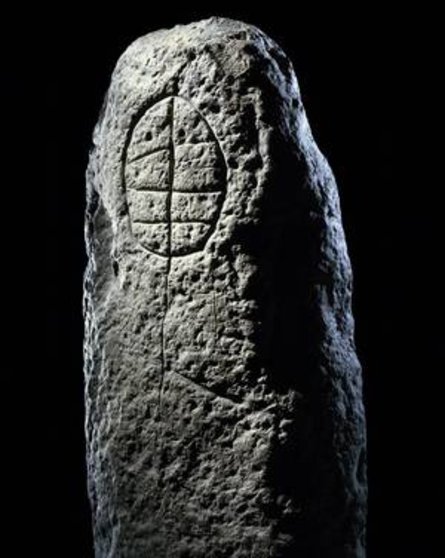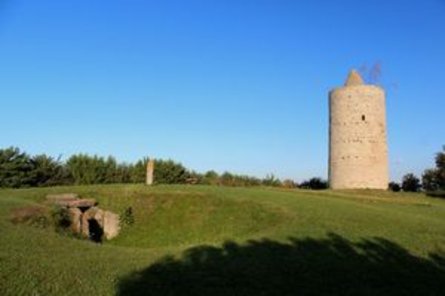
The tomb and the menhir were created between 3,600 and 2,700 BC. During the excavations sandstone and limestone slabs were removed. Below a unique 1.76 m menhir came to light. At the upper end of this stele numerous scratches are visible. They represent in a very simplified manner a female deity – the dolmen goddess. In addition, an axe motif can be recognised as a male status symbol. The sides of the goddess show clear signs of smoothing. They indicate a religious custom: by touching the menhir fertility was expected for humans, animals, and crops. On the floor of the burial chamber were also found ornaments made from animal teeth, copper, bone, and amber.
The dolmen goddess at the site is a replica. The original of the menhir is kept in the State Museum of Prehistory in Halle.

Immediately next to the megalithic chamber tomb and the dolmen goddess stands a watchtower. It is part of a High Medieval system of territorial border works.
Every year on Whit Sunday the Langeneichstädt Warteverein e. V. (watchtower club) invites to a party at the open-air site. Visitors then have the opportunity to climb the watchtower. Also on Open Monuments Day club members provide information about the watchtower and the dolmen goddess.